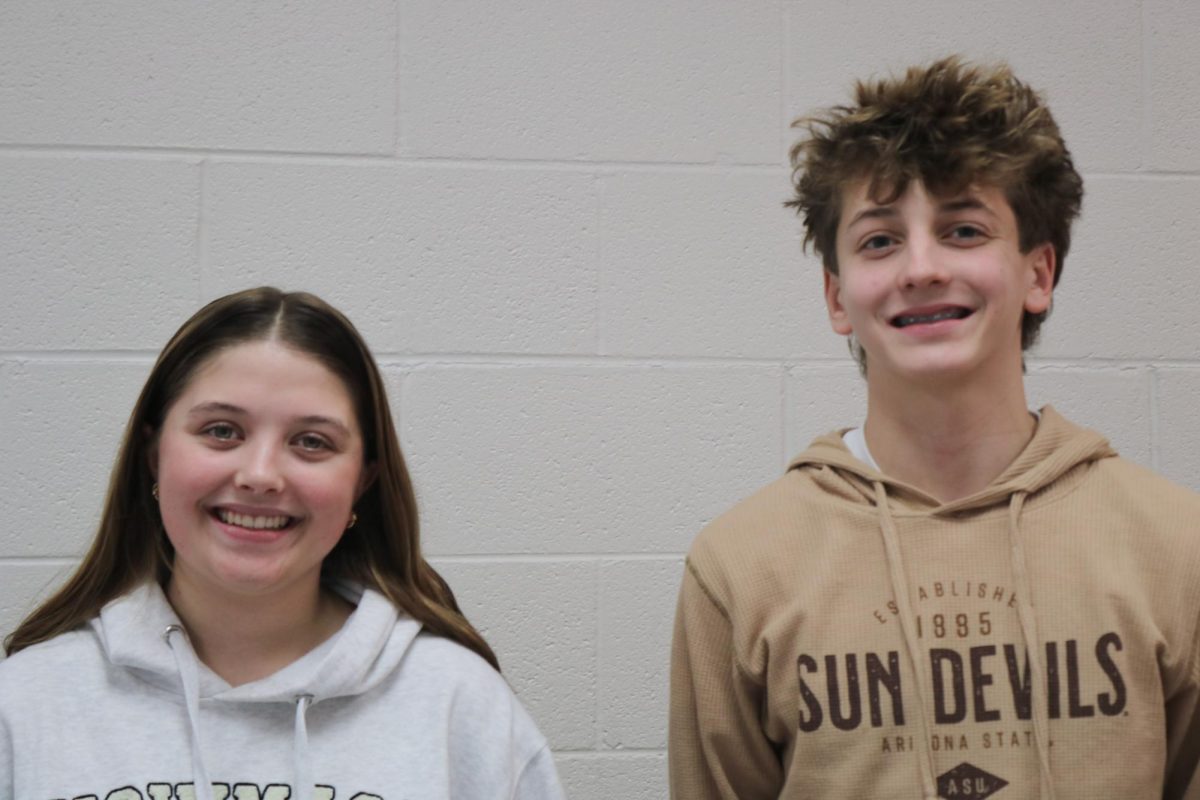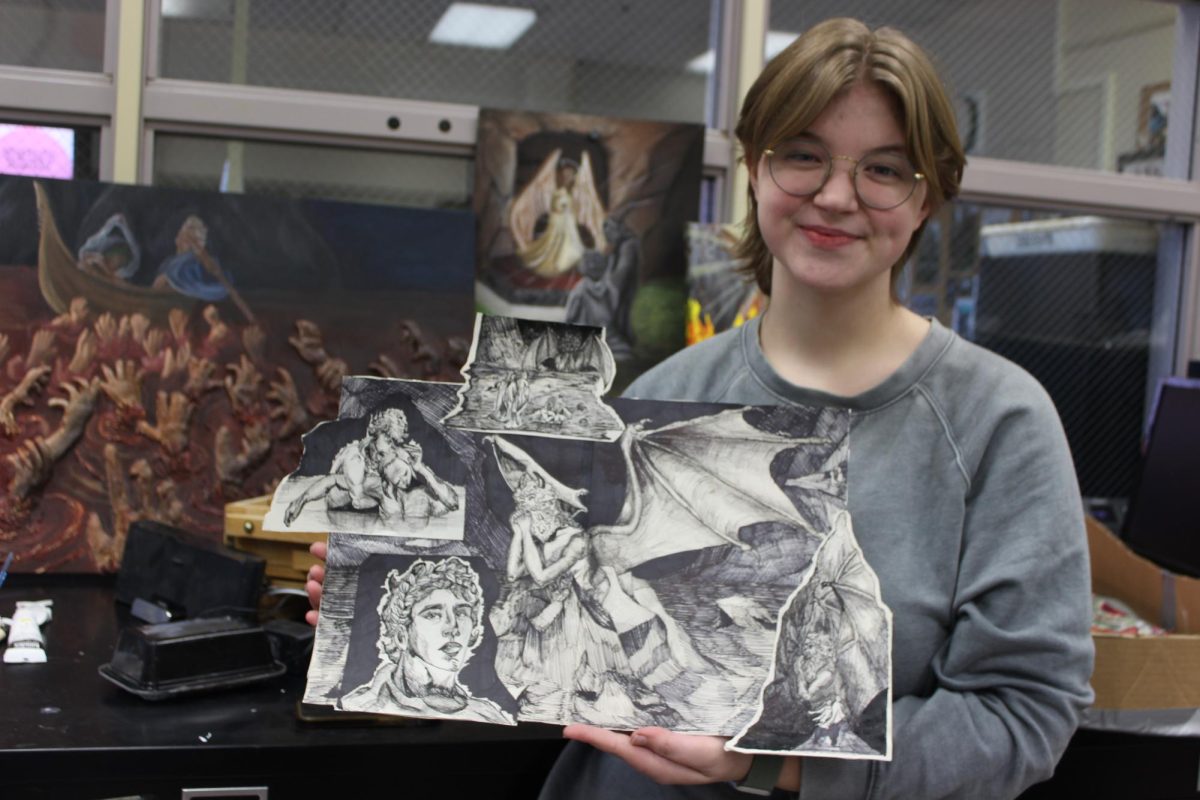Applying for college can be a long and difficult process, but applying to a fine arts college can require an even more extensive process, complete with auditions, interviews, portfolios and lots of waiting. Focusing in on four categories — theater, dance, musical instruments, and art — these are the steps it takes to apply to a college for fine arts. Please note that while all colleges have different methods, these are the most common ones.
Theater
Theater majors are required to academically apply to the school first, with an audition following their acceptance. To start the process, students must apply to the schools they wish to attend and then sign up for auditions. Auditions can take place at each school or are available at National Unified Auditions, an event in Chicago, L.A., and New York where applicants can audition for multiple schools at once.
Future musical theater major at Seton Hill University and senior Johanna Nimmer described the common tryout: “Each audition is kind of the same thing. There is a monologue portion, most of them just wanted one monologue…and then you do two songs. They aren’t full songs, just about 2-3 bars. Then there is a dance portion, which they teach you on the spot.”
Musical theater auditions are different than theatre auditions. Musical theater requires songs and dances to be performed, as opposed to regular theater auditions, which are heavy on monologues, which are prolonged, solo speeches.
With so many students hoping to go into theater programs, it is important to note that the more schools applied to, the better.
“First of all, you have to apply to way more schools than normal,” Nimmer explained. “I think most people at [LHS] apply to five or six [colleges]. I had to apply to 16.”
Given the process, it takes longer to hear back from schools. On average, theater majors are granted acceptances around late March or early April.
Dance
Future dance majors have a similar multi-step process to be admitted.
“You have to figure out you want to dance pretty early on because most schools want you to apply academically before you can apply for dance,” senior Kayla Fiore, who plans on majoring in dance this fall, explained. “It’s like two different applications.”
Oftentimes, if a student is admitted into the dance program but not academically, the school will change their decision to accept the student, Fiore mentioned.
The steps begin by sending in a résumé, complete with either a photo or video of the applicant dancing, headshots, and occasionally additional essays or a video that answers provided questions. Résumés ask questions about the student’s passion for dance and dance-related programs they have participated in. If a college is happy with the senior’s qualifications, they send an invitation for an audition.
Auditions are normally held at the school, but colleges can send representatives to big cities to audition there, accommodating prospective students. Common auditions begin with a ballet section, followed by contemporary dances and then solo routines. In between each portion, cuts occur. All dances are taught there, except the solo dance, which should be prepared in advance. If the prospective student is not cut by the end, some colleges may want interviews with the remaining dancers, according to Fiore.
The procedure can be quite lengthy, around a few months total, similar to the theatre process.
“I started doing auditions in October/November, so I had to be done applying to schools by October,” Fiore stated. “The process starts early on, and it continues [like that] for awhile…[which means] you are hearing back around March.”
Art
The main aspect to an art application is the portfolio. Senior Maddie Ellis, who will be majoring in illustration, described the common portfolio.
“Each college is different, but the standard [portfolio] is [that] they want you to have 12-24 pieces of art that you are satisfied with,” she said.
Works of art are to be submitted electronically. 2D artwork is scanned through a machine so that it can be available on the computer; 3D art is photographed and photography is already on the computer, so it can be easily submitted.
Ellis also reflected on the sequence of the artwork in the portfolio: “The order is really important, too. It’s like your second-to-best [piece is] first, and then your best is last, so that it makes a good impression. It’s strategic.”
Art teachers at the schools being visited assist with arranging the portfolio. Colleges also provide admissions counselors that can help approve portfolios before they are turned in.
Although there are different sections to each art school, it is suggested students apply to the college that is their overall biggest interest. Switches between different art majors are always acceptable, so the major chosen isn’t permanent.
Music
Music majors’ processes begin with sending in a specific music application, along with a video of the applicant playing their instrument.
Students begin to apply around October or November. Senior Meghan Mullins, who will be playing the piano and cello and majoring in music education next year at St. Olaf College, explained how it works: “If you apply to the college first and get in [academically], then you can still go [for music], but if you get into the music program and not the college, then you can’t really go.”
Written applications ask for several components: teacher recommendations, awards/medals won in the past, music-related essay questions and every piece ever performed.
“That was crazy, it was so much work,” Mullins exclaimed. “I had to submit a repertoire list of everything I have played. I had to do all my piano pieces, all my chamber music, all my orchestra pieces and cello solos. I had to dig up all my programs and remember everything I had done.”
Another aspect of the application is a video performance. Students are expected to play different pieces on the video so that schools will understand their skill.
“A lot of the schools want the different eras [of music] because they have different techniques and styles,” Mullins added.
Once admissions offices review sent-in work, they either accept, reject or call back students. Callbacks result in live auditions held at the campus. Live auditions require a lot of preparation and practice, and some schools request sight reading at the audition.
On campuses, colleges will allow prospective students to meet with teachers they could potentially have if they attend there. This gives students better insight as to which school is right for them.
Callbacks occur anywhere from January to March. The majority of music majors will hear back from their schools around late March or early April.







![Senior River Thompson joins the Jazz Ensemble by singing “That Old Black Magic” by Mercer and Arlen Arr. Mark Taylor, along with senior Annie Brody on guitar and junior Thomas Teixeira on bass, earning big applause. “[The concert had] great energy because it's the last [jazz concert] of the year,” Brody said.](https://www.lhsdoi.com/wp-content/uploads/2025/04/Eight-That-Old-Black-Magic-1200x800.jpg)
![Mr. Abullh Ali, manager/assistant, helps open Queen Yemeni Coffee in downtown Libertyville at 606 North Milwaukee Ave. With the help of employees such as manager and LHS senior Yousef Taha, they are able to bring the Yemeni and Ethiopian culture to Libertyville by using their Queen spices, cinnamon and cardamom in their drinks such as Adani Chai, which is inspired by Sheda, the Queen of Yemen and Ethiopia. “The history of our coffee [is] a long history and we believe that Yemen and Ethiopia started the coffee and we are bringing something unique to the community,” Mr. Ali said.](https://www.lhsdoi.com/wp-content/uploads/2025/04/Photo-1-1200x800.jpg)




